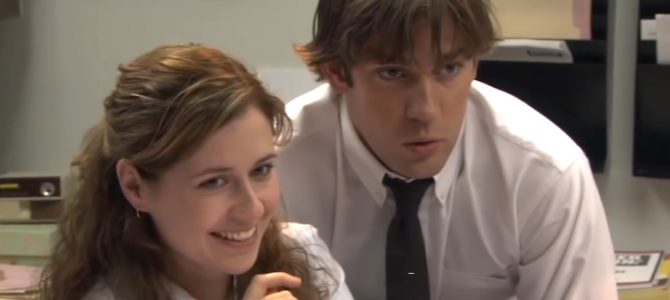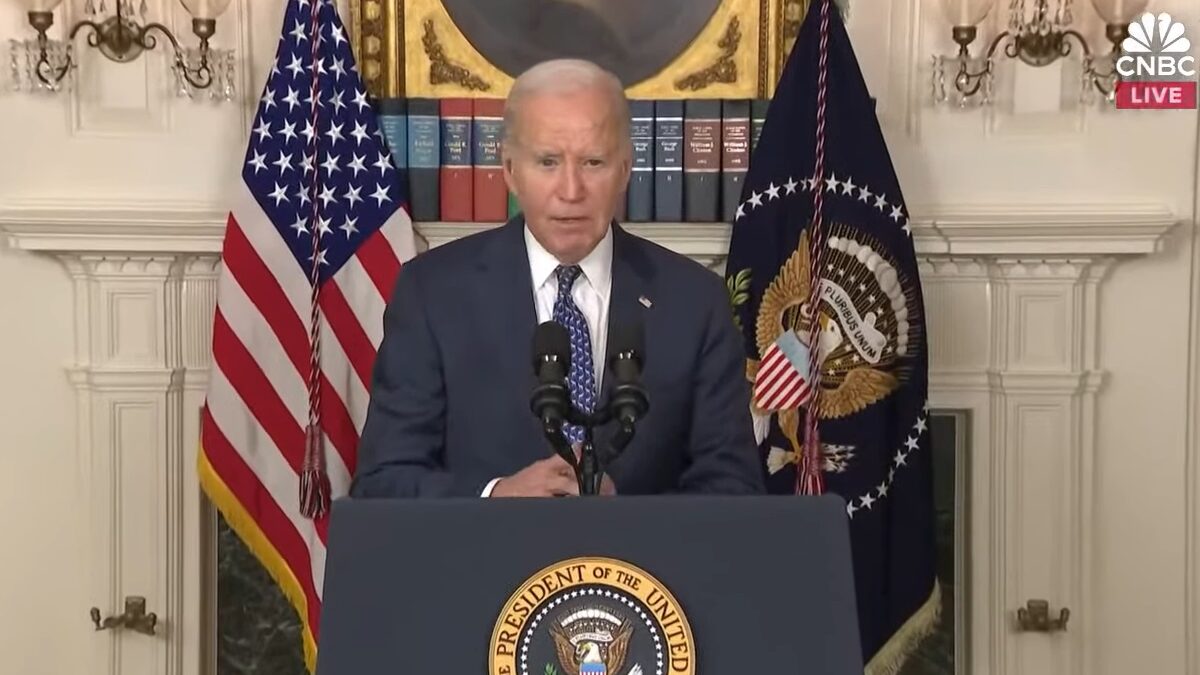
Today’s biggest fans of NBC’s “The Office,” were watching cartoons when the show first debuted more than 16 years ago. Most of the Gen Z fans that fuel “The Office’s” cult following were introduced to the series on Netflix, several years after the show came to an end in 2013.
Unsurprisingly, young fans lost their minds on Twitter when NBC announced it would be pulling “The Office” from Netflix in 2021.
Me, hearing that #TheOffice is leaving @netflix in 2021 pic.twitter.com/Sjjf4555eg
— Rachel Syens (@rachsyens) June 25, 2019
But before “The Office” was tragically removed from the streaming platform in January of this year, The Wall Street Journal published a breakdown of Netflix viewership, finding that almost 3 percent of total user minutes in 2018 were spent watching episodes of “The Office.” Keep in mind that there are hundreds of shows on Netflix and that three percent of total minutes spent watching TV on Netflix adds up to 52 billion minutes.
“The Office,” is unique when compared to other shows beloved by young audiences. It’s no “Outer Banks” or “Stranger Things.” Instead of treasure hunting or fighting alternate-universe monsters, “The Office” focuses on the mundane work lives of the employees of Dunder Mifflin, a struggling paper supply company in dreary Scranton, Pennsylvania.
Odd as it may seem, it is “The Office’s” focus on ordinary jobs that make the show so endearing to all generations. Despite Gen Z putting outsized stress on needing to be passionate about their work, they like the idea that happiness and fulfillment can be found in “lame” jobs, too. Indeed, the show is more than timeless jokes, but a message on the dignity of all work, which is a valuable lesson in our nation’s massive labor crisis.
The employees of Dunder Mifflin know that the industry for which they work is dying at the hands of an increasingly digital world. At the beginning of the series, all the characters feel dissatisfied and even trapped by their pointless conference room meetings and monotonous phone calls speaking to clients about “quantities and types of copier paper.”
However, as the series progresses, the characters like their office lives more and more. Despite their jobs being benign and insecure in the wake of the 2008 recession, the Dunder Mifflin employees make the most of things. The series blossoms as viewers watch the characters build relationships with each other and find drive, fulfillment, and even love in their ordinary jobs.
The best example of this is 20-something Jim Halpert (John Krasinski), who is arguably the show’s main character. At the beginning of the series, Jim is of course a loveable prankster, but he is also quite lost in life. He doesn’t particularly like being a paper salesman, putting minimal effort into his job. However, things change once the awkward and meandering Jim finally starts dating and eventually marries his long-time crush Pam Beesly, the Dunder Mifflin receptionist.
With a wife and a growing family to support, Jim finds a newfound passion for work. He becomes one of the company’s top salesmen and eventually co-manager of the Scranton branch of the company. Not only that, but Jim (and the viewers) begin to find his co-worker Dwight Schrute (Rainn Wilson) more amusing than irritating, and his boss, Michael Scott (Steve Carell), more lovable than an insensitive jerk.
While most fans can’t get enough of the first several seasons, the last few tend to get very poor reviews. Indeed, there is a real sense that something is amiss in the later episodes. Many chalk this up to Carrell parting ways with NBC after season seven. While this is certainly one of the reasons, it isn’t the only one.
In a recent video by Graham Blackaby on his YouTube channel “Captain Midnight,” the movie and TV critic suggests another reason why the series’ ending was less than satisfying. According to Blackaby, “The Office” “transformed itself into a show about cartoon-ish best buddies who just so happened to work at a paper company.” In doing so, it lost the charm that came with grounding the series in the reality of regular work days at Dunder Mifflin.
Cementing the departure from the show’s original ideals comes in season nine, when Jim begins working part-time at a sports marketing start-up called Athlead. At the end of the series, Jim and Pam quit their jobs at Dunder Mifflin and move to Austin, Texas, so Jim can work for Athlead full time. Blackaby explains that the show’s writers “felt that Jim and Pam deserved something better than boring, old Dunder Mifflin, so they wanted to end the show by sending him off to an amazing job.”
“I think what [‘The Office’] was at its best,” says Blackaby, “was characters trying to find some meaning and hope in the boring absurdity of low-level corporate work life.” Unfortunately, Jim’s new job, which has him “shooting hoops with NBA legends,” could not be “farther from the real spirit of ‘The Office.’” It is the writers turning their backs on the “spirit” of “The Office,” that leaves viewers feeling that the finale is disconnected from the show they once loved.
The early seasons of “The Office” have a Silent Generation ethos, but the finale is a picturesque Gen Z ending. “Young people are being told, ‘You can’t just get a job, you have to find a job that fulfills you, that you’re passionate about,’” explained Amy Wharton, a sociologist who specializes in American work-life in an interview with Vox. So why don’t Gen Z fans like the ending of “The Office?”
Maybe the reason the finale doesn’t click with anyone, including young people, is because we want Jim to still be content as a paper salesman. Deep down, we all love the idea that you don’t need to work for a company like Athlead (as most of us don’t) to find humor, happiness, and fulfillment. We want to know that there is dignity and value in whatever job we have, whether we are working in retail, fast food, or paper.
Today, even though there are millions of jobs open, the labor participation rate is at its lowest since the 1970s. Countless businesses, big and small, can’t find workers to do the menial labor jobs. It’s why hundreds of container and cargo ships are docked outside of ports with no one to unload them.
The current labor crisis can largely be attributed to Democrats discouraging workers by funneling billions of dollars into state and federal unemployment perks that add up to more than working full-time with a $15 hourly wage. It can also be attributed to a clear decline in the classic American work ethic.
Sleeping in, staying in PJs all day, and collecting government checks might be easier than getting up every day and going to a dull or vexing job, but there is no dignity in that. There is, however, dignity in going to work every day to flip burgers, work construction, or sell paper to support yourself and your family.
Jim found the love of his life, bought a house, built a career, and provided for his family through Dunder Mifflin. If “The Office” in its prime taught us anything, it’s that there’s no shame in having a dull job. Pride and gratification come from working hard, the joys of everyday life, and the relationships that you build along the way.
To be clear, there is nothing wrong with following one’s passion in work, but there is also nothing wrong with taking the “boring” job, too. Joy can be found anywhere, and as Pam says, “There’s a lot of beauty in ordinary things.”
This story was originally published in the Chicago Thinker.









